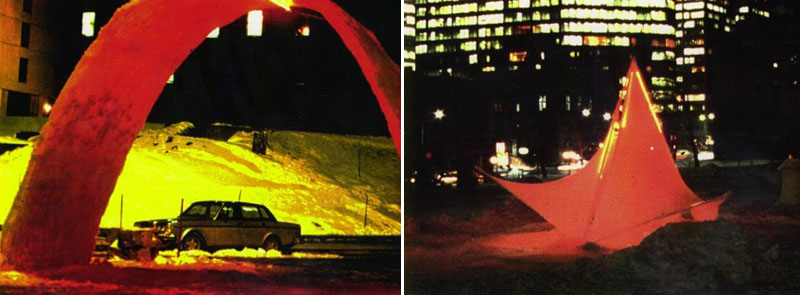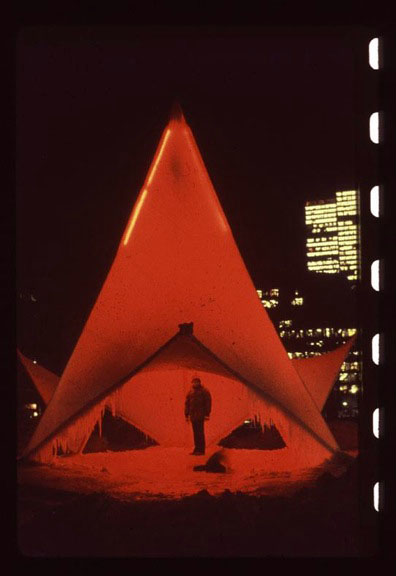While we’re on the subject of ice and architecture, it’s worth taking a quick look back at the incredible body of architectural research produced at McGill University exploring how designers and engineers can build full-scale, elaborate structures using nothing but frozen water. They call this “computer assisted ice construction”, or the “robot-assisted rapid prototyping” of frozen environments.
A small but dedicated team led by Pieter Sijpkes and Jorge Angeles has been spear-heading the experimental use of ice at the university, creating everything from 3D-printed chains to what they describe as “commercial and industrial part modelling” used in fabrication, including full-scale construction tests for “the ice-tourism industry.”

“For instance,” they explain, “small-scale ice models represent economical alternatives to intricate 3D models of architectural objects, be they scale models of buildings, site models, or building details.” Why prototype in plastic, in other words, when you can simply use the renewable, remeltable, and refreezable resource of freshwater?

Ice structures at McGill University, from “Ice research led by P. Sijpkes at McGill Since 1972,” courtesy McGill University.
Awesomely, like something out of the X-Men, Sijpkes and Angeles add that “casting techniques are being investigated in order to produce high-quality metal copies from ice originals.”
In any case, a cool little document called “Ice research led by P. Sijpkes at McGill Since 1972” (download the .doc) shows some photos and brief captions for things like fabric-reinforced ice-shells, ghostly draperies of “double curved translucent ice on a suspended nylon substrate,” and a glimpse of the extraordinary 1/5th scale accurate model of the Roman Pantheon made from “packed snow.” It was called the Ice Pantheon.

Wired looked at some of this a few years ago, as well, asking Sijpkes how he managed to fabricate “a machine that prints objects by building up ultrathin layers of ice.” It relies on the careful control of “ice deposition” — that is, 3D printing use ice as “ink.”
According to RepRapWiki, ice-based 3D printers would need to operate in what is described as “a sub zero print environment,” a literally frozen space in which ice architecture can be thermally realised.
“Probably the most practical way of doing this would be to place the entire 3D printer into a walk in freezer or similar,” RepRapWiki adds, conjuring visions of a future construction industry populated by nothing but automated ice robots working in huge refrigerated warehouses, freezing prefab rooms into existence, one detail at a time.
Here’s how the printing is done:
The idea is that you deposit a very thin bead of water onto your build surface is the same way that would extrude plastic. Once a layer has been laid down there would be a delay of a few minutes while it freezes in the cold build chamber. Once frozen, the next layer is deposited and the process repeats. By keeping the beads of water only a few millimetres in size surface tension alone should be enough to keep them in place.
I have to admit to being somewhat blown away by this. The very idea of “robot-assisted” ice architecture is absolutely incredible, like some weird magic show touring the Arctic Circle — a polar wizardry of instant cities emerging like calculations from the ice.
Reflective machines buzz and whir away inside with proprietary algorithms, thermally altering the world around them into smooth new towers and shapes — huge walls, floors, and ceilings, domes and arches — forming towns, houses, and roads where before there had only been water.
With the waving of an artificially intelligent robot arm, glacial structures of tomorrow appear, shining beneath the aurora, outdoing anything Italo Calvino might have dreamed in Invisible Cities.
